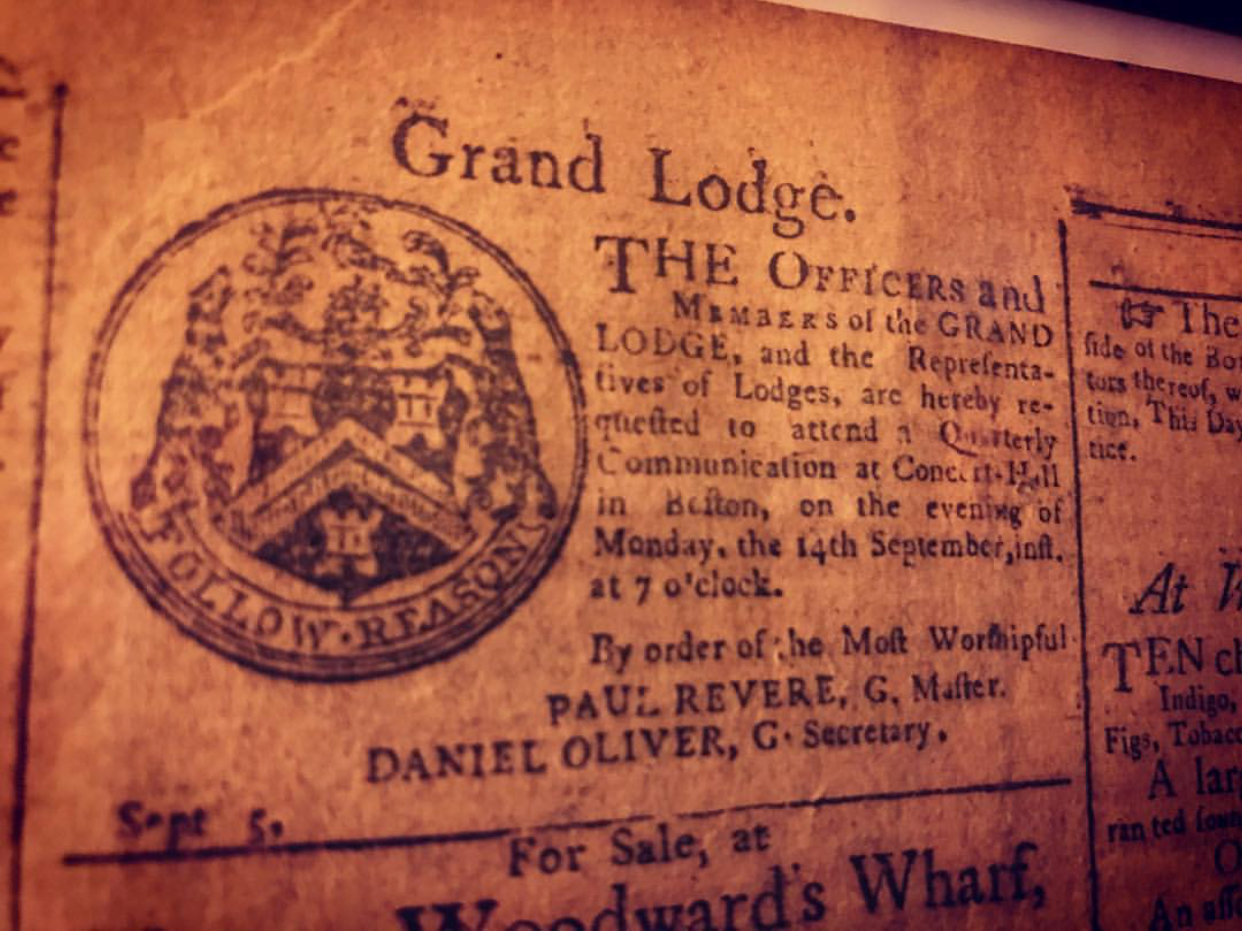Freemasonry formally began in the year 1717 in London with the first Grand Lodge of Freemasons being established.[1] Although, this can be debated due to previous records and documents proving the fact that lodges and speculative Freemasonry preceded a 1717 date. One particular document known as the Regius Manuscript dates back to the 15th century. The first lodge of Freemasons in the United States was founded in 1715 in Pennsylvania, two years before the first Grand Lodge was formed in London.[2] Freemasonry took and acquired many ideas of the Enlightenment era. They were very egalitarian in principle. The term “meeting on the level” comes from Freemasonry, for members are taught that everyone is equal and that no one man is considered higher than that of another. Freedom, equality, and democratic values were demonstrated within lodges before the thought of a revolution came to fruition in the United States.

Another aspect of Freemasonry that became exceedingly popular within the foundation of the United States was the toleration and acceptance of various faiths and religions[3]. A man of any faith was allowed membership into Freemasonry. The only requirement to be made a Freemason was that he be of good morals, a belief in a “Supreme Being”, and that he be of lawful age.[4] The term Supreme Being and Grand Architect of the Universe is substitution names for everyone’s personal deity or creator. In doing so, the Fraternity shows no allegiance to any particular religion, faith, or ideology. This practice became a part of the United States’ ethos as being a place of freedom of worship.[5]

The first Masonic funeral service took place before California was even admitted into the United States. A heavily tattooed man was found floating in the San Francisco Bay and upon examining the body, he was found to be holding on him a shekel of a Mark Master Mason, which was inscribed with his initials. The tattoos on his body were those of the symbolism of Freemasonry and contained the images of the Entered Apprentice, Fellowcraft, and Master Mason. Upon the discovery, examination, and conclusion that he indeed was a Freemason, a large number of brothers, although not knowing him personally, gathered to pay respects and give their brother a Masonic funeral.[6] Although the man’s name was never known, the Masonic community came together and rendered unto him a Masonic ceremony. From this source, we can see that the funeral had a large attendance of Freemasons who came from “all quarters of the globe”.[7]

The first lodges gathered and were granted charters to meet and conduct business in California as they arrived. On November 9th, 1848, a charter was given to California Lodge No. 13, now known as California Lodge No. 1, by the Grand Lodge of the District of Columbia to organize and meet regularly.[8] The first Worshipful Master of the newly founded lodge, Levi Stowell, transported the charter from Washington to San Francisco. Levi traveled to San Francisco by ship that went South on the Atlantic Ocean towards Panama. Once he arrived in Panama, Levi had to carry the charter by mule across the isthmus towards the Pacific. Once Levi reached the coastline of the Pacific Ocean he waited several weeks until another ship arrived to transport him and the charter to San Francisco.
[1] United Grand Lodge of England, accessed March 22, 2018, http://www.ugle.org.uk/about-freemasonry/history-of-freemasonry.
[2] Grand Lodge of Texas, The Masonic Trowel, “Freemasonry and the American Revolution.” Last modified March 22, 2014. Accessed March 22, 2018. http://www.themasonictrowel.com/Articles/History/united_states_files/freemasonry_and_the_american_revolution_gltx.htm.
[3] Mitch Horowitz, Occult America (New York, NY: Bantam Books, 2009) 25.
[4] United Grand Lodge of, Constitutions of the Antient Fraternity of Free & Accepted Mason under the United Grand Lodge of England: Containing The General Charges, Laws & Regulations, Etc.. (London: Freemason’s Hall, 2018) vii-ix.
[5] Horowitz, pg. 62
[6] History of Nevada with Illustrations and Biographical Sketches of Its Prominent Men and Pioneers (Oakland, CA: Thompson and West, 1881) 234.
[7] Ibid, 234.
[8] San Francisco, accessed March 27, 2018, http://ohp.parks.ca.gov/?page_id=21482.
